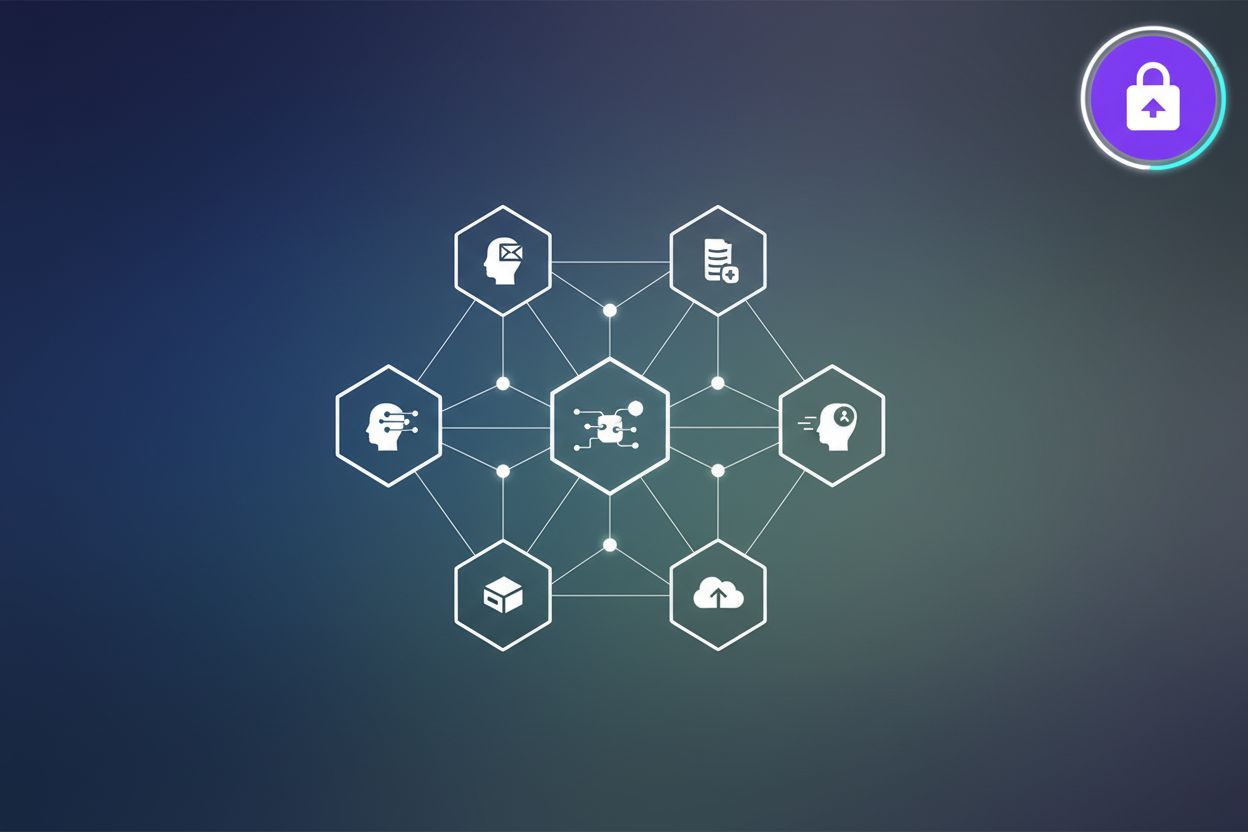Conversational AI Platforms for Enhanced Login Management
TL;DR
Introduction to Conversational AI in Login Management
Okay, let's dive into how conversational ai is changing the login game. I mean, who actually enjoys resetting passwords? Not me, that's for sure.
It's basically ai that can, like, talk to you. But it's way more than just old-school chatbots--it's about understanding what you mean, not just what you say. (Replika)
- Think nlp, nlu, and nlg. That's Natural Language Processing, Understanding, and Generation. Basically, it figures out what you want, understands the context, and then spits out a human-sounding response. These are the building blocks that let the ai actually "get" you.
- It ain't your grandma's chatbot. Regular chatbots follow a script, while conversational ai can actually learn and adapt. (Chatbots vs. Conversational AI: What's the Difference?) It learns from interactions, so it gets better over time at understanding common user issues, like different ways people ask for password resets or how they phrase security questions.
- Examples are everywhere. From healthcare (scheduling appointments, answering basic questions) to retail to even finance, conversational ai is popping up all over the place, automating tasks and improving customer experience.
Yeah, really! Think about it--logging in can be a pain in the butt. Security's crucial, but so is a smooth user experience. And who wants to call customer support just to reset a password?
- Password resets? Easy. A conversational ai can guide you through the process without needing a human agent, saving time and frustration. It can even learn common mistakes users make during resets and offer tailored guidance.
- Multi-factor authentication gets simpler. Instead of fiddling with codes, you could just verify your identity through a quick voice or text exchange.
- Account recovery's less of a headache. And if you're locked out, a conversational ai can help you prove who you are and get back in, without waiting on hold forever.
So, yeah it is not a bad idea. Next up, we will see the role of conversational ai in authentication.
LoginHub: Your Conversational AI Solution for Login Management
So, we've been talking a lot about conversational ai and how it can make logins better. But how do you actually do it? That's where LoginHub comes in.
LoginHub is our platform designed to bring the power of conversational ai directly into your login and authentication processes. It's not just another chatbot; it's a specialized solution built to handle the unique challenges of identity management.
What LoginHub Does:
- Intelligent Authentication Flows: LoginHub uses advanced nlp and nlu to understand user intent. Whether a user needs to reset a password, unlock an account, or complete multi-factor authentication, LoginHub guides them through the process conversationally.
- Seamless Integration: It's built to integrate smoothly with your existing identity providers and security infrastructure, meaning less hassle during implementation.
- Enhanced Security: Beyond just convenience, LoginHub can incorporate advanced verification methods, like voice biometrics or contextual analysis, to add extra layers of security.
- User Experience Focus: The primary goal is to reduce friction for your users. By making common login tasks conversational and intuitive, LoginHub significantly improves user satisfaction.
- Data Security & Compliance: LoginHub is designed with security and compliance at its core, ensuring sensitive user data is handled responsibly and adheres to regulations.
Think of LoginHub as the intelligent assistant that sits between your users and your authentication systems, making the entire experience smoother, more secure, and less frustrating. It's the practical application of all the conversational ai benefits we've discussed, tailored specifically for login management.
Benefits of Using Conversational AI for Login Processes
Okay, so you're probably thinking, "How can talking to a bot make logins better?" Well, trust me, it's a game changer. Imagine ditching those annoying security questions for a quick chat.
Conversational ai simplifies logins in a few key ways. It's about making the process smoother and less frustrating for everyone involved.
- Password Resets, Simplified: Forget those clunky password reset forms; a conversational ai can guide you through it step-by-step. It's like having a friendly tech support agent available 24/7. It can even learn common user errors and offer tailored help.
- MFA Made Easy: Multi-factor authentication can be streamlined too. Instead of juggling codes from apps, you could verify with a quick voice command or text message, making it way less of a hassle.
- Account Recovery Without the Headache: Getting locked out of your account is a major pain. A conversational ai can help verify your identity and get you back in, without the endless waiting on hold.
And it's not just about convenience, you know? It's also about adding layers of security. Think voice recognition or even facial recognition for that extra level of protection.
Now, let's be real, there's always a catch, right? We gotta think about privacy and security, ensuring these ais aren't storing sensitive data unnecessarily.
So, what's next? Well, next up is diggin' into how conversational ai can actually boost security during logins.
Evaluating Conversational AI Platforms for Login Management
Evaluating conversational ai platforms, huh? It's not as simple as picking the shiniest object, trust me. You gotta dig into what actually matters for login management. Let's break it down, because honestly, some of these platforms are overkill for just password resets.
First off, natural language processing (nlp). Does it really understand what users are saying, or just keyword matching. Think about it – someone might say "I forgot my password", or "can't access my account", or even "locked out"--the ai needs to grok all that, right?
- Integration with existing identity management systems is also a must. You don't want to build a whole new system from scratch. It needs to play nice with your current setup!
- Security and compliance certifications (soc 2, gdpr) are non-negotiable, especially with login info. If they aren't taking security seriously, run the other way.
- Scalability and reliability matters, too. What happens if your user base suddenly doubles? Will the ai crumble under the pressure?
Okay, so you got the features down. Now, which platforms are worth a look? Well, there's Dialogflow (Google), ibm watson assistant, and amazon lex. They're all big names, but they ain't all created equal.
- Dialogflow's great if you're already in the google ecosystem. Easy to use, but can get pricey as you scale. Dialogflow integrates seamlessly with Google services, which is a big plus if you're already invested there.
- ibm watson assistant's got some serious nlp chops, but it can be a beast to set up.
- Amazon Lex is good if you're all in on aws, but it's more focused on voice experiences, so maybe not ideal for login management alone.
And while i'm at it, don't forget about alltius.ai. They focus on automating workflows while meeting industry requirements for data security. Their strength lies in streamlining processes and ensuring compliance, which is definitely relevant for sensitive areas like login management.
So, how does this all play out in the real world? Picture this: a bank using conversational ai for account recovery. Instead of making customers fill out forms or call a support line, they can verify their identity through a quick chat. It's faster, more secure, and way less frustrating.
Or imagine a healthcare provider using it for password resets. Patients can reset their passwords without having to wait on hold or remember those ridiculous security questions.
Next up, we are going to discuss real implementaions of that conversational ai.
Implementing Conversational AI in Your Login System
Alright, so you're ready to actually do this, huh? Implementing conversational ai in your login system isn't some sci-fi pipe dream anymore; it's totally doable. But where do you even start, right?
First thing's first, you gotta take a hard look at what you already got. I mean, is it even worth bolting ai onto your current system, or is it like putting a spoiler on a beat-up minivan?
- Compatibility is key. Does your existing identity management system play nice with ai platforms? Are their api's in place? If it's all custom-built from the stone age, you might be in for a world of hurt.
- Security holes. Seriously, where are the weak spots? An ai isn't going to magically fix security flaws; it might even expose them. If you got compliance issues, now's the time to address 'em.
Don't just implement ai because it's the "next big thing." Have some actual goals here, people! What problems are you trying to solve?
- Password resets are the classic example. But how many password resets are we really talking, and how much time and money would an ai save? Is it worth it?
- Think beyond the obvious. Maybe you want to beef up mfa or make account recovery less of a nightmare. Get specific about the user experience you want to deliver.
This is where things get tricky. There's a boatload of ai platforms out there, but not all of them are created equal. As w2ssolutions.com points out, scalability, security, and customization are key factors to consider.
- Natural language processing (nlp) is a must. But does it understand slang, different accents, and weird user inputs? Test it out!
- Integration is non-negotiable. It needs to work with your existing systems, and it needs to be secure.
- Consider custom integrations. If you have developer resources, you could roll your own integrations. Platforms like Pollinations.AI offer simple apis for various functions, and while their primary focus might be creative generation, the underlying api structure could be adapted for building custom conversational flows if you have the expertise.
Okay, you've picked a platform, now it's time to hook it up and see if it blows up... or works.
- Start small. Don't roll it out to everyone at once. Pick a small group of users for beta testing and get their feedback.
- Monitor, monitor, monitor. Keep a close eye on the ai's performance. Is it actually solving problems, or is it just confusing people?
Once you've ironed out the kinks, you're ready for full deployment. Remember, this is an ongoing process. You gotta keep training the ai, monitoring its performance, and adapting to changing user needs.
Next, let's talk about how LoginHub streamlines this whole process.
Security and Compliance Considerations
Okay, so you're probably thinking, "security and ai... can't that be a problem?". Well, yeah, it can. But if you're smart about it, you can minimize the risks.
Encryption is your best friend. You gotta encrypt data both in transit and at rest, otherwise, it's like leaving your front door wide open. Think of sensitive info like social security numbers, addresses, and financial details.
Anonymization and pseudonymization are also good moves. This means masking or replacing data so it can't be directly linked to an individual. So, even if there's a breach, the damage is limited.
Complying with regulations like gdpr and ccpa ain't optional. It's the law, plain and simple. Plus, as Alltius.ai notes, security measures for personal data protection should be "Best in class".
ai hacking is a real threat. Hackers could try to manipulate the ai to get it to spill sensitive info or even bypass security measures. For example, they might try to trick the ai into revealing user data by asking it in a very specific, convoluted way, or exploit vulnerabilities in how the ai processes certain inputs to gain unauthorized access.
Phishing and social engineering attacks are also something to watch out for. Criminals might try to trick users into giving up their login credentials by posing as the ai. This could involve creating fake login pages that mimic the conversational interface, or sending phishing emails that direct users to interact with a malicious version of the ai.
Monitoring for suspicious activity is crucial. Keep an eye out for unusual login attempts, weird data access patterns, or anything else that seems fishy.
See, it's not just about implementing the ai, you know? It's about doing it responsibly. Next, let's see how LoginHub can help you with this.
Future Trends in Conversational AI and Login Management
Okay, so what's next for conversational ai in login stuff? Honestly, it's kinda wild to think about how far it's come. Let's look at some future trends, because things are about to get even more interesting.
nlp is gonna get even smarter. I mean, we're talking about ai that really gets what you mean, not just what you say. Think fewer frustrating bot interactions, and more like talking to a real, helpful person.
Biometrics are movin' in. Imagine logging in with just your voice, or even how you move your mouse. It's not just about passwords anymore, it's about you being the key.
Generative ai is changing everything. Instead of just answering questions, ais can create personalized login experiences on-the-fly. This means the ai could dynamically adjust the login flow based on your past behavior, the device you're using, or even the sensitivity of the action you're trying to perform, making it more secure and user-friendly.
Passwords? So last year. Passwordless authentication is gaining steam, which means using things like fingerprint scanners or facial recognition to get in.
Decentralized identity is a thing. Imagine controlling your identity data, instead of a company holding it.
ai is making logins smoother and safer. It's not just about making it easier, it's about making sure you're the only one getting in.
So, yeah, that's where things are headed. It's all about better ai, better security, and a login process that doesn't make you wanna pull your hair out.





